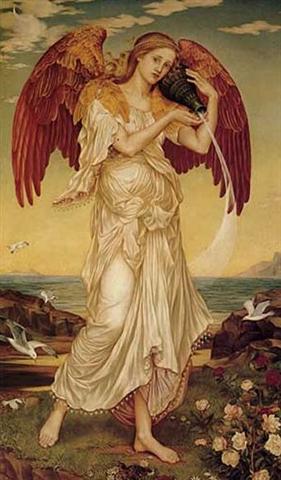... Note that rain and stars are singled
out as the characteristics of the sky: we have seen that the
ancients of Mesopotamia and in India shared the concept of a
divine 'sky garment' consisting either of rain clouds or of
the starry sky ...
had dissipated this morning.
And here was Venus
visible to the naked eye again, after having been absent for 8 nights behind the Sun.
...when the new moon appeared women
assembled and bewailed those who had died since the last
one, uttering the following lament: 'Alas! O moon! Thou has
returned to life, but our departed beloved ones have not.
Thou has bathed in the
waiora a Tane,
and had thy life renewed, but there is no fount to restore
life to our departed ones. Alas' ...
And towards the end of my early morning walk
the Dawn
could be observed to
emerge from the horizon in the east.
In December 6 (AD 2023) I had lost sight of Venus, and 5 + 8 = 13
→ December 13.
Therefore, after another 8 days would come the solstice in December 21
(355).
The dates in the Julian (Gregorian) Sun calendar were evidently synchronized (in
cosmic synchronism) with the synodic cycle of Venus (→
Lucia).
... There is a couple residing in one
place named Kui and Fakataka [meaning
Creating a Cycle]. After the couple stay together for a
while Fakataka is pregnant. So they go away because
they wish to go to another place - they go. The canoe goes
and goes, the wind roars, the sea churns, the canoe sinks.
Kui expires while Fakataka swims. Fakataka
swims and swims, reaching another land. She goes there and
stays on the upraised reef in the freshwater pools on the
reef, and there delivers her child, a boy child. She gives
him the name Taetagaloa [meaning Not Tagaroa].
When the baby is born a Golden Plover flies over and
a-lights upon the reef. (Kua fanau lā te pepe kae
lele mai te tuli oi tū mai i te papa).
And so the woman thus names various parts
of the child beginning with the name 'the plover' (tuli):
neck (tuliulu), elbow (tulilima), knee (tulivae).
They go inland at the land. The child nursed and tended
grows up, is able to go and play. Each day he now goes off a
bit further away, moving some distance away from the house,
and then returns to their house ...
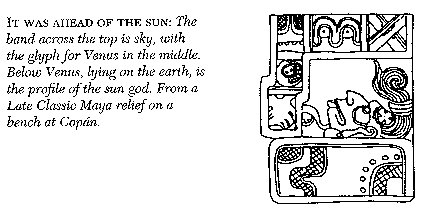
And then the morning news for December 14 (348
→ 12 * 29 →
December 29)
announced it was time for people to look up at the night sky because
the Gemini meteor swarm was due to arrive.
Evidently there were 8 significant meteor showers:
|
Dec 14 |
Jan 3 |
|
Geminids |
Quadrantides |
|
April 21 |
Aug 12 |
Oct 10 |
|
Lyrids |
Perseids |
Draconids |
|
Oct 21 |
Nov 4 |
Nov 16 |
|
Orionids |
Taurids |
Leonids |
But the Geminids was a special case. For instance
because these meteors originated from a point close
to the star named Middle (Wasat), which
'happened to be' 5
days after the Virgins (Adara).
"Just north of
δ lies the radiant point of the Geminids, visible early
in October; another stream of meteors bearing the same
title appearing from the northeastern border of the
constellation and at its maximum on the 7th of
December." (Allen)
... Nut, whom the Greeks sometimes
identified with Rhea, was goddess of the sky, but it was
debatable if in historical times she was the object of a
genuine cult. She was Geb's twin sister and, it was
said, married him secretly and against the will of Ra.
Angered, Ra had the couple brutally separated by Shu and
afterwards decreed that Nut could not bear a child in
any given month of any year. Thoth, Plutarch tells us,
happily had pity on her. Playing draughts with the Moon,
he won in the course of several games a seventy-second
part of the Moon's light with which he composed five new
days. As these five intercalated days did not belong to
the official Egyptian calendar of three hundred and
sixty days, Nut was thus able to give birth successively
to five children: Osiris, Haroeris (Horus), Set, Isis
and Nepthys ...:
Wasat was the delta star in the
Gemini constellation and it should therefore not be
surprising to here observe a pair of meteor streams.


|
Egyptian
door |
 |
Phoenician
dalet |
 |
Greek
delta |
Δ (δ) |
... Delta
(uppercase Δ, lowercase δ) ... is
the fourth letter of the Greek
alphabet. In the system of Greek
numerals it has a value of 4. It was
derived from the Phoenician letter
Dalet.
Letters that come
from delta include Latin D and
Cyrillic Д. A river delta
(originally, the Nile River delta)
is so named because its shape
approximates the upper-case letter
delta (the shape is a triangle) ...
Dalet (dāleth,
also spelled Daleth or
Daled) is the fourth letter of
many Semitic alphabets ... The
letter is based on a glyph of the
Middle Bronze Age alphabets,
probably called dalt 'door'
(door in Modern Hebrew is delet),
ultimately based on a hieroglyph
depicting a door.

... Sorrowing, then, the two women
placed Osiris's coffer on a boat,
and when the goddess Isis was alone
with it at sea, she opened the chest
and, laying her face on the face of
her brother, kissed him and wept.
The myth goes on to tell of the
blessed boat's arrival in the
marshes of the Delta, and of how
Set, one night hunting the boar by
the light of the full moon,
discovered the sarcophagus and tore
the body into fourteen pieces, which
he scattered abroad; so that, once
again, the goddess had a difficult
task before her. She was assisted,
this time, however, by her little
son Horus, who had the head of a
hawk, by the son of her sister
Nephtys, little Anubis, who had the
head of a jackal, and by Nephtys
herself, the sister-bride of their
wicked brother Set. Anubis, the
elder of the two boys, had been
conceived one very dark night, we
are told, when Osiris mistook
Nephtys for Isis; so that by some it
is argued that the malice of Set
must have been inspired not by the
public virtue and good name of the
noble culture hero, but by this
domestic inadventure. The younger,
but true son, Horus, on the other
hand, had been more fortunately
conceived - according to some, when
Isis lay upon her dead brother in
the boat, or, according to others,
as she fluttered about the palace
pillar in the form of a bird.
The four bereaved and searching
divinities, the two mothers and
their two sons, were joined by a
fifth, the moon-god Thoth (who
appears sometimes in the form of an
ibis-headed scribe, at other times
in the form of a baboon), and
together they found all of Osiris
save his genital member, which had
been swallowed by a fish. They
tightly swathed the broken body in
linen bandages, and when they
performed over it the rites that
thereafter were to be continued in
Egypt in the ceremonial burial of
kings, Isis fanned the corpse with
her wings and Osiris revived, to
become the ruler of the dead. He now
sits majestically in the underworld,
in the Hall of the Two Truths,
assisted by forty-two assessors, one
from each of the principal districts
of Egypt; and there he judges the
souls of the dead. These confess
before him, and when their hearts
have been weighed in a balance
against a feather, receive,
according to their lives, the reward
of virtue and the punishment of sin
...
|

I guess the modern computer age technical term
'delete' had been chosen because it suggested the
idea of an exit door (Hebrew delet).
|
PENTAGRAM COMPLETED |
|
First Point of
Pentagram |
584 |
2nd Point |
580 |
3rd Point |
|
July 6 AD 1908 (185) |
July 8 AD 1900 (188) |
Febr 14
AD 1902 (45) |
Sept 17 AD 1903 (260, 625) |
|
APRIL 30 (120) |
MAY
3 (187 - 64, 488) |
DEC 9 (407 - 64 = 7 * 49) |
EQUINOX (SEPT 22, *185, 265) |
 |
 |
 |
 |
|
Ga2-10 (40) |
Ga2-13
(43) |
Gb2-8
(263 → 214 + 49) |
Ga7-16
(185 → July 6) |
|
July 3 (*104)
era of rongorongo |
July 6
(*107) era of rongorongo |
*220 |
Febr 11 (*327) era of
rongorongo |
*220 |
Nov
25 (*249) era of rongorongo |
|
ADARA (*104) |
τ Geminorum
(*107) |
Castra (ε Capricorni, *327) |
ANTARES (*547) |
|
*327 - *107 = *220 → 584 - 364 |
*547 - *364 = *183 = *366 / 2 |
|
APRIL 29 |
30
(*40) |
MAY 1
(121) |
2 |
 |
 |
 |
 |
|
Ga2-9 |
Ga2-10 |
Ga2-11 |
Ga2-12 (42) |
|
Mash-mashu-sha-Risū-9 (Twins of the
Shepherd)
θ
Geminorum (103.0),
ψ8
Aurigae (103.2),
ALHENA =
γ
Geminorumi
(103.8),
ψ9
Aurigae (103.9)
April 19
AD 2023
(109, *29)
MARS |
ADARA (Virgins) = ε Canis Majoris
(104.8)
July 6 AD 1908 (185)
VENUS (*104.8)
*104.8 - *41.4 = *63.4
→
HYADUM I |
ω
Geminorum (105.4),
ALZIRR (Button) =
ξ
Geminorum
(105.7),
MULIPHEIN (Oaths) =
γ
Canis Majoris
(105.8),
MEKBUDA (Contracted) =
ζ
Geminorum
(105.9)
*64.0 = *105.4 - *41.4 |
7h (106.5)
No star listed (106) |
|
July
2 |
3 (*104) |
4 (185) |
5 |
|
║June
28 |
29
(*100) |
SIRIUS |
║July
1 (182) |
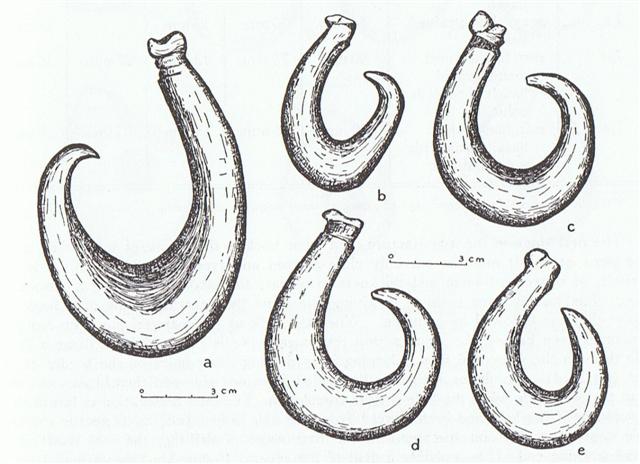 |
|
'June
5 |
6
(157 → 314 / 2) |
7
(*78 = 6 * 13) |
8 |
|
"May
22 |
23 |
24
(*64 = 8 * 8) |
25 (145) |
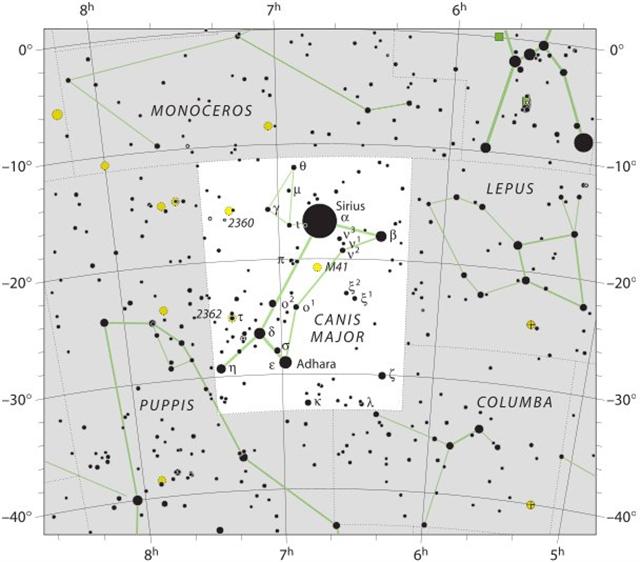 |
|
MAY 2 (*42) |
3 (123, 488) |
4 |
5 (365 + 125 = 490) |
 |
 |
 |
 |
|
Gb6-25
(229 + 178) |
Gb6-26
(408 → 40 * 8 = 320) |
Gb6-27 (360 / 2) |
Gb6-28 (45 + 136) |
 |
 |
 |
 |
|
Ga2-12 (42) |
Ga2-13 (408 - 365) |
Ga2-14 |
Ga2-15
(45) |
|
PLACE OF THE SUN: |
|
7h (106.5)
No star listed (106) |
WEZEN (Weight) =
δ
Canis Majoris
(107.1),
τ Geminorum
(107.7),
δ
Monocerotis (107.9)
July 8 AD 1900 (187)
VENUS (*107.4)
*66.0 = *107.4 - *41.4 |
No star listed (108) |
λ Gemini (109.4),
WASAT
(Middle) = δ
Geminorum
(109.8)
*68.0 = *109.4 - *41.4
RADIANT POINT FOR THE
GEMINIDS |
 |
|
July 5 (186 = 106 + 80) |
6 (*107) |
7 |
July
8 (187) |
|
░July 1 (182) |
2 |
3 (*104) |
4 |
|
'June 8 (159 = 186 - 27) |
9 (*80) |
10 |
11 |
|
"May 25
(12 * 12 = 186 - 41) |
26 |
27 |
28 (*68) |
|
THE NAKSHATRA
VIEW: |
|
OCT 31 |
NOV 1 (123 + 182) |
2 (300 + 6) |
3 (*227) |
|
Al Na'ām-18 (Ostriches) /
Uttara Ashadha-21 (Elephant tusk, small bed)
NUNKI
= σ Sagittarii (288.4),
ζ Cor. Austr. (288.5),
MANUBRIUM = ο Sagittarii
(288.8), ζ Aquilae (288.9)
*247.0 = *288.4 - *41.4
|
19h (289.2)
λ
Aquilae (Ant.) (289.1),
γ
Cor. Austr (289.3),
τ
Sagittarii (289.4),
ι
Lyrae (289.5),
δ
Cor.
Austr. (289.8)
*248.0 = *289.4 - *41.4 |
Al Baldah-19 (City)
AL BALDAH = π Sagittarii,
ALPHEKKA (Dish)
MERIDIANA = α Cor. Austr.
(290.1), β Cor. Austr. (290.2) |
ALADFAR (The Talons) = η Lyrae
(291.1),
NODUS II = δ Draconis
(291.5), ψ Sagittarii (291.6), τ
Draconis (291.7), θ Lyrae
(291.8) |
 |
|
Jan 3 (368) |
4 |
5 (*290) |
6 |
|
░Dec 30 (364) |
31 (*285) |
░Jan 1 |
2 |
|
'Dec 7 |
8 |
9 (*263) |
10 (344) |
|
"Nov 23 |
24 |
25 (*249) |
26 (330) |
 |
 |
 |
 |
|
Ga8-21 |
Ga8-22 |
Ga8-23 |
Ga8-24 (227 → 314 → π) |
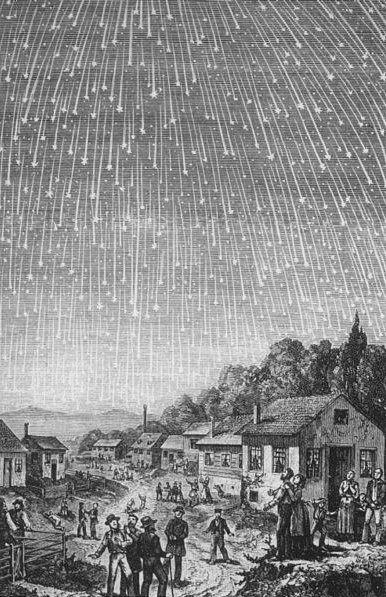
And, remarkably, the
'parent' of the Geminids was the strange stony object
named 3200 Phaeton - with an orbit like a
comet but with no light nor any visible red tail.
... 'From now on', said
Father Sun, grieving over
Phaeton, his fallen
child, 'you shall be
Mink' ...
... The Pythagoreans make
Phaeton fall into Eridanus, burning part of its
water, and glowing still at the time when the
Argonauts passed by. Ovid stated that since the fall
the Nile hides its sources. Rigveda 9.73.3 says that
the Great Varuna has hidden the ocean. The
Mahabharata tells in its own style why the 'heavenly
Ganga' had to be brought down. At the end of the
Golden Age (Krita Yuga) a class of Asura
who had fought against the 'gods' hid themselves in
the ocean where the gods could not reach them, and
planned to overthrow the government. So the gods
implored Agastya (Canopus, alpha Carinae =
Eridu) for help. The great Rishi did as he was
bidden, drank up the water of the ocean, and thus
laid bare the enemies, who were then slain by the
gods. But now, there was no ocean anymore! Implored
by the gods to fill the sea again, the Holy One
replied: 'That water in sooth hath been digested by
me. Some other expedient, therefore, must be thought
of by you, if ye desire to make endeavour to fill
the ocean ...

...
Tavake
is the general Polynesian name for the tropic bird (Phaeton),
whose red tail feathers were very popular. This name
is closely connected with the original population
...

|

